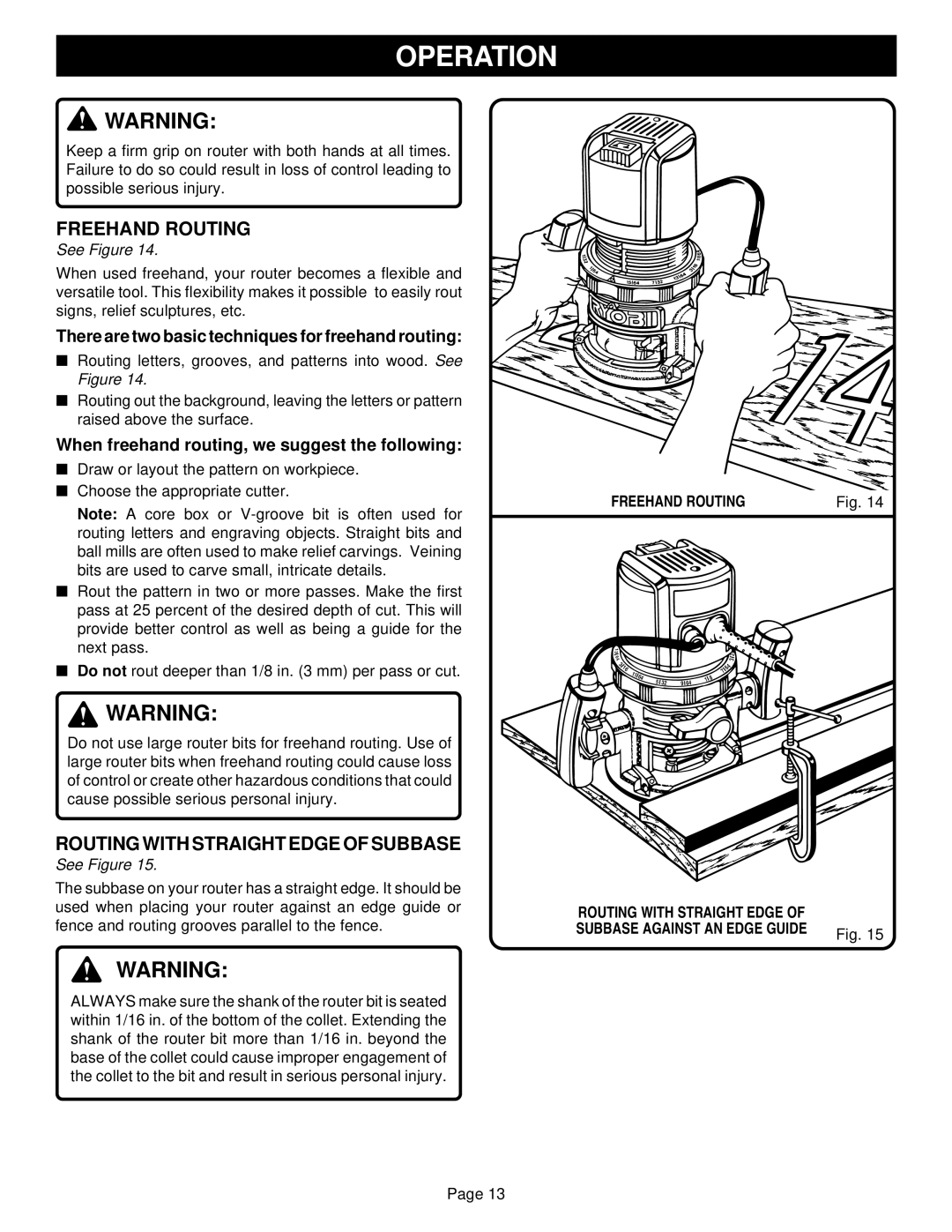
OPERATION
![]() WARNING:
WARNING:
Keep a firm grip on router with both hands at all times. Failure to do so could result in loss of control leading to possible serious injury.
FREEHAND ROUTING
See Figure 14.
When used freehand, your router becomes a flexible and versatile tool. This flexibility makes it possible to easily rout signs, relief sculptures, etc.
There are two basic techniques for freehand routing:
■Routing letters, grooves, and patterns into wood. See Figure 14.
■Routing out the background, leaving the letters or pattern raised above the surface.
When freehand routing, we suggest the following:
■Draw or layout the pattern on workpiece.
■Choose the appropriate cutter.
Note: A core box or
■Rout the pattern in two or more passes. Make the first pass at 25 percent of the desired depth of cut. This will provide better control as well as being a guide for the next pass.
■Do not rout deeper than 1/8 in. (3 mm) per pass or cut.
![]() WARNING:
WARNING:
Do not use large router bits for freehand routing. Use of large router bits when freehand routing could cause loss of control or create other hazardous conditions that could cause possible serious personal injury.
ROUTING WITH STRAIGHT EDGE OF SUBBASE
See Figure 15.
The subbase on your router has a straight edge. It should be used when placing your router against an edge guide or fence and routing grooves parallel to the fence.
WARNING:
ALWAYS make sure the shank of the router bit is seated within 1/16 in. of the bottom of the collet. Extending the shank of the router bit more than 1/16 in. beyond the base of the collet could cause improper engagement of the collet to the bit and result in serious personal injury.
FREEHAND ROUTING | Fig. 14 |
13 | 3 |
6 | |
4 | 3 |
3 |
|
|
|
|
| 4 |
16 |
|
|
|
|
| |
|
|
|
|
| 6 | |
11 | 64 |
|
|
|
| 7 |
5 |
|
| 1 | 8 | ||
|
| 32 | 9 64 |
|
| |
|
|
|
|
|
ROUTING WITH STRAIGHT EDGE OF |
|
SUBBASE AGAINST AN EDGE GUIDE | Fig. 15 |
|
Page 13
